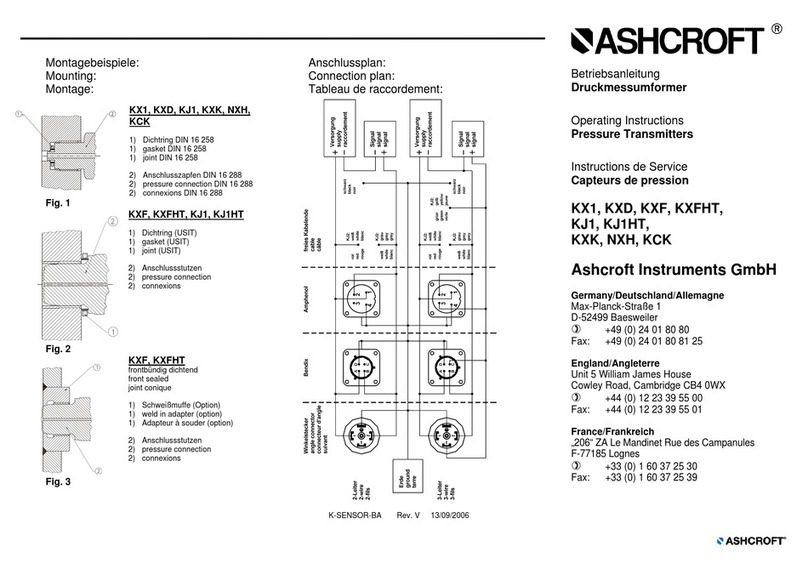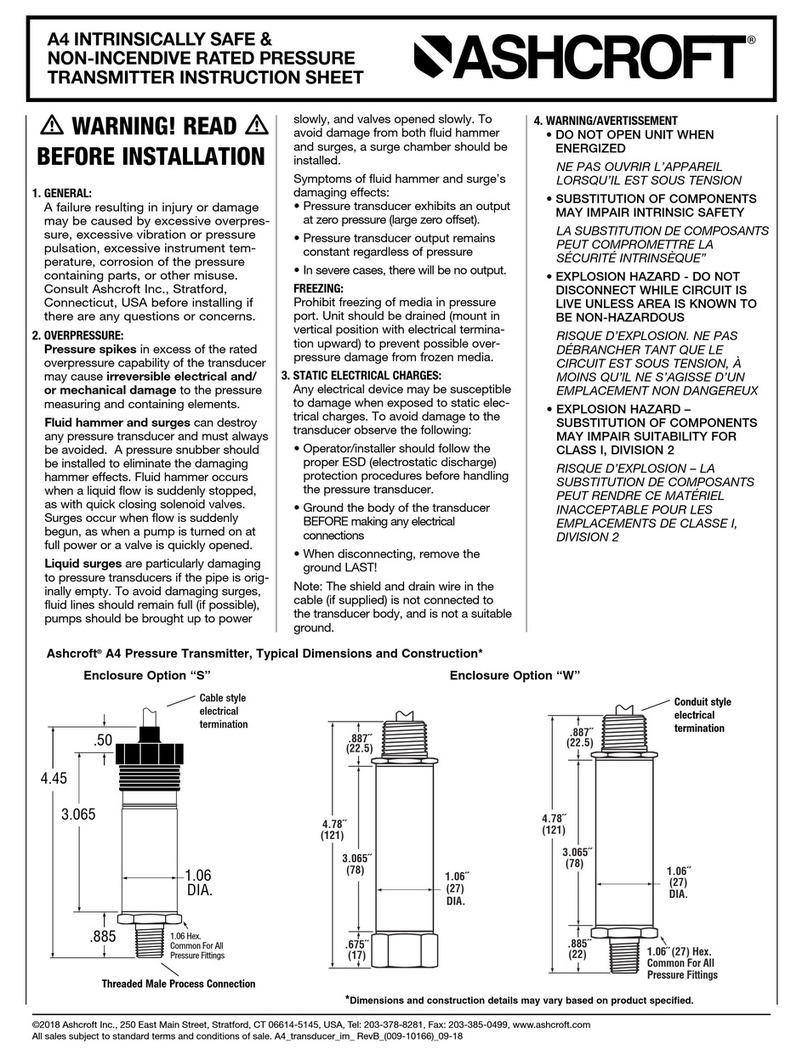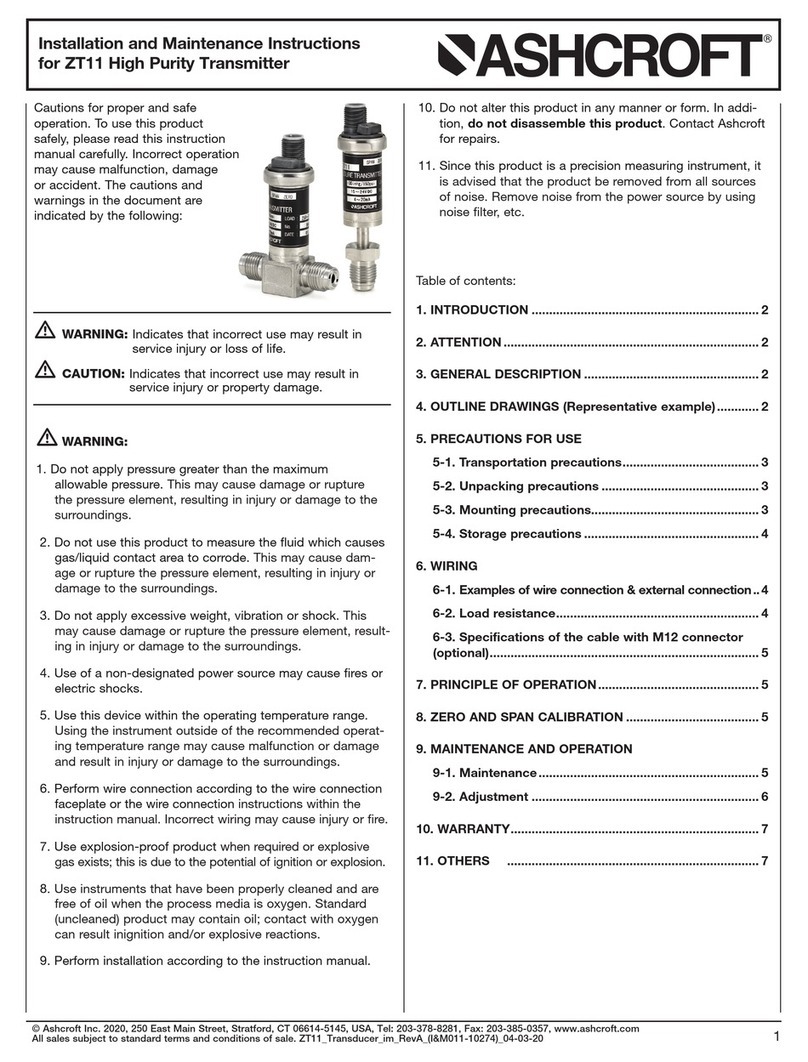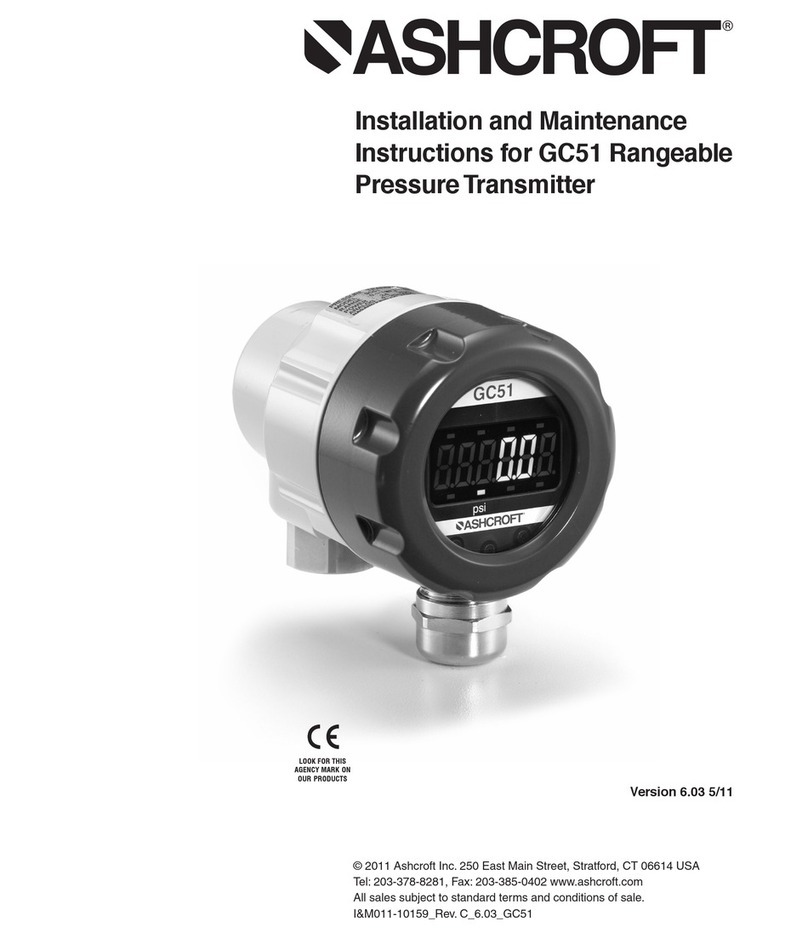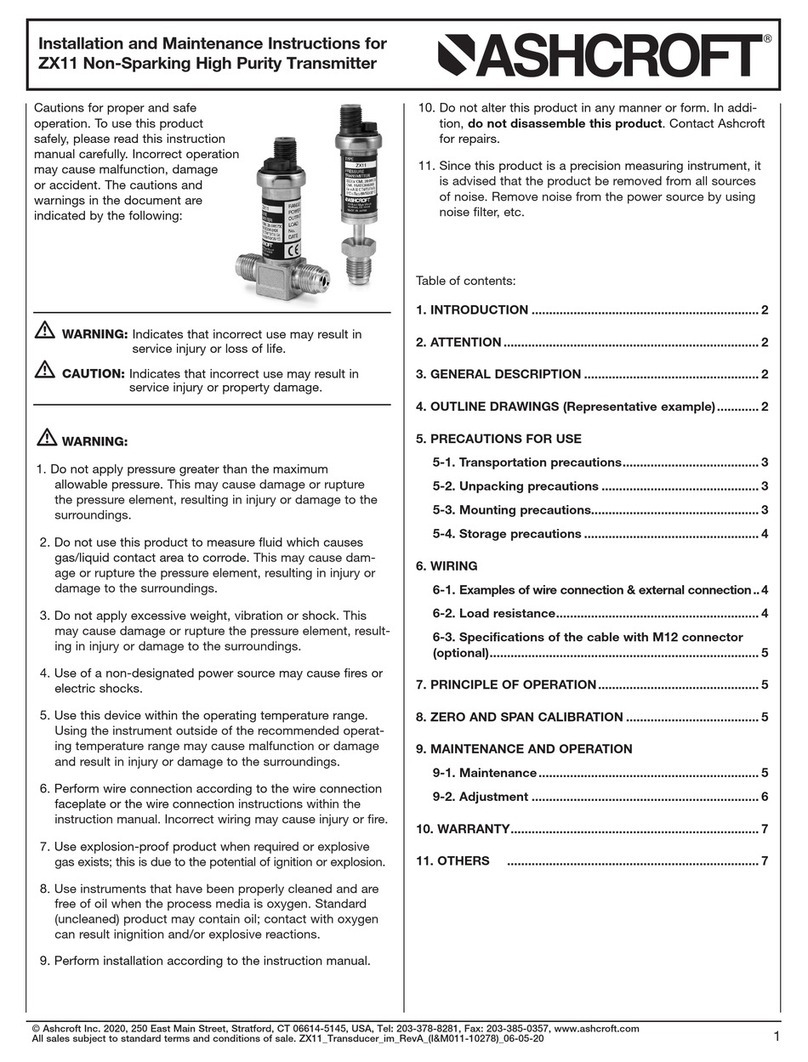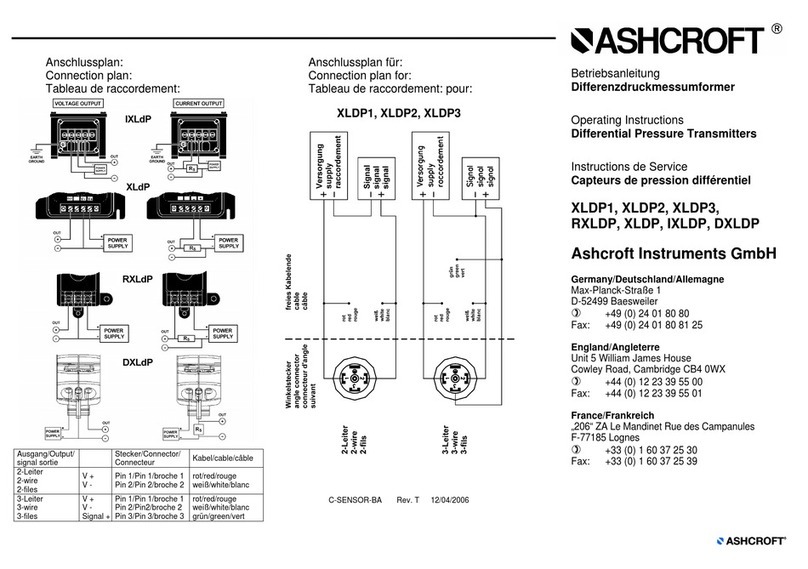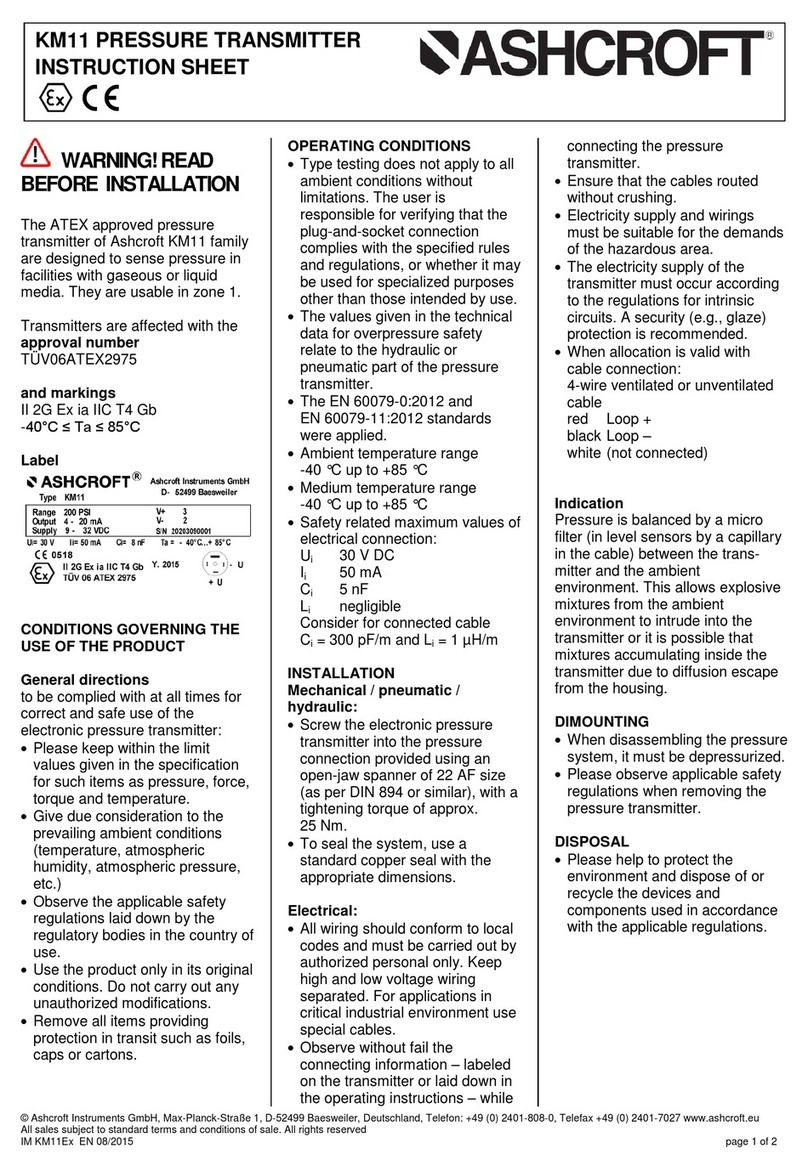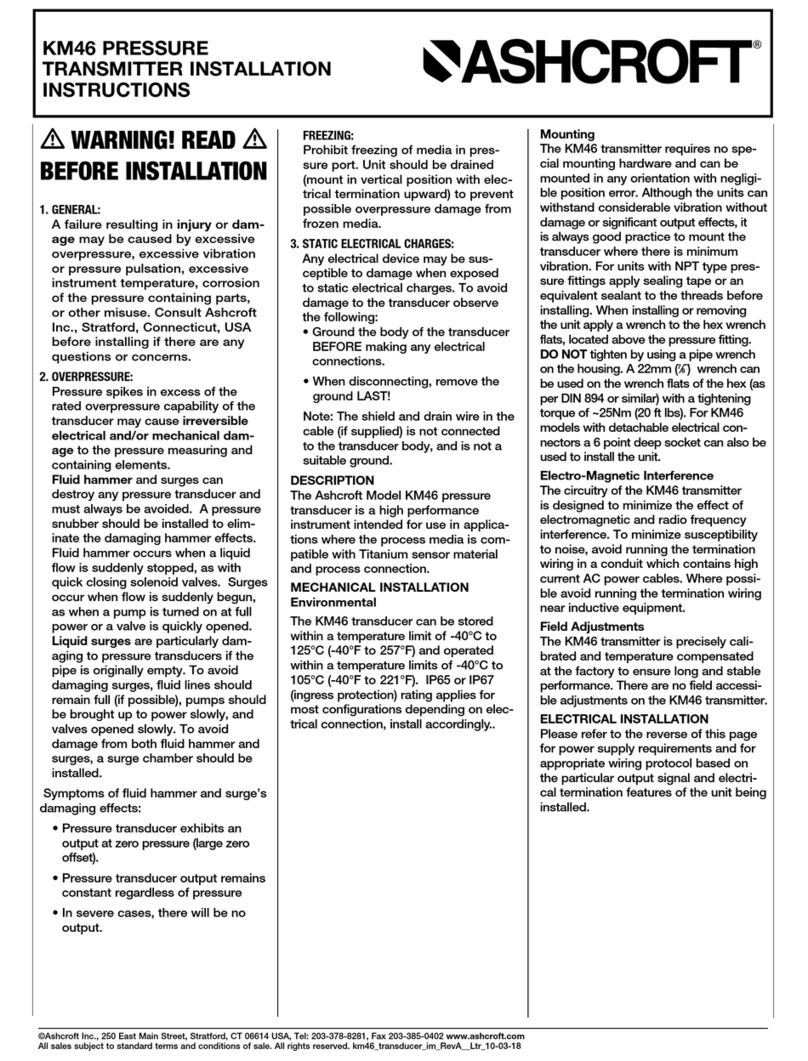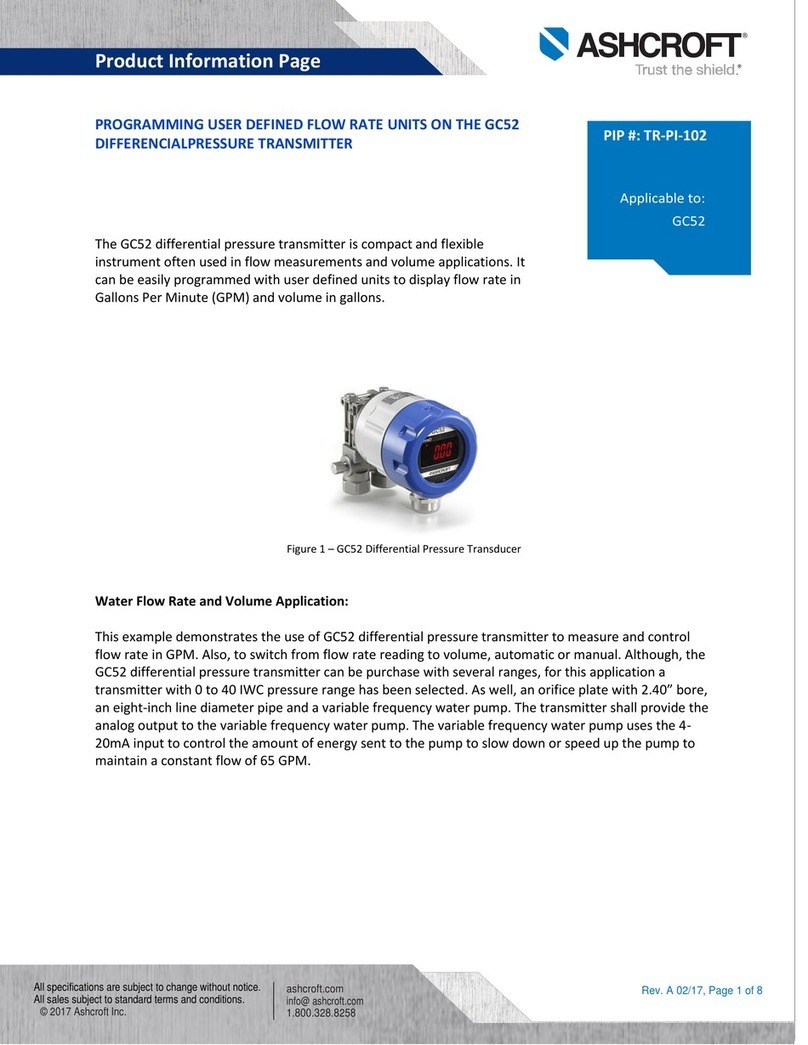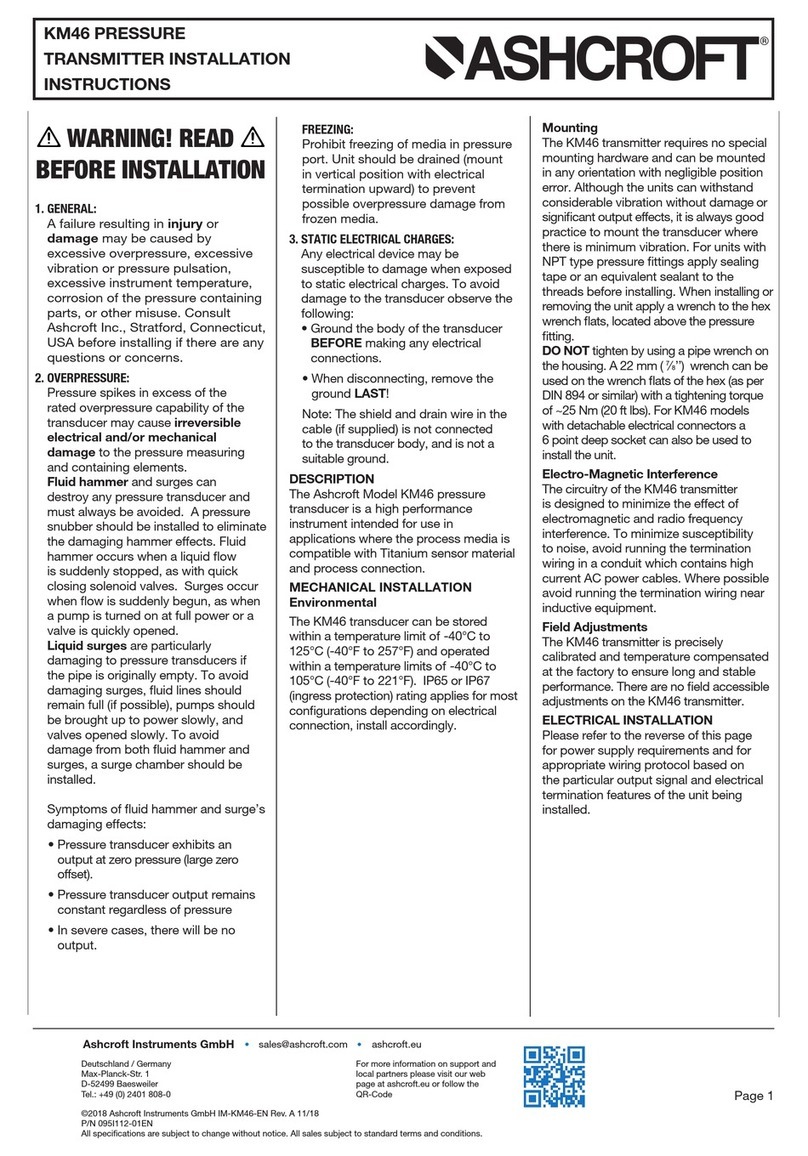4
GENERAL:
A failure resulting in injury or damage may be caused by excessive
overpressure, excessive vibration or pressure pulsation, excessive in-
strument temperature, corrosion of the pressure containing parts, or
other misuse. Consult Ashcroft Inc., Stratford, Connecticut, USA before
installing if there are any questions or concerns.
OVERPRESSURE:
Pressure spikes in excess of the rated overpressure capability of the trans-
mitter may cause irreversible electrical and/or mechanical damage to the
pressure measuring and containing elements.
Fluid hammer and surges can destroy any pressure transmitter and must al-
ways be avoided. A pressure snubber should be installed to eliminate the
damaging hammer effects. Fluid hammer occurs when a liquid flow is sud-
denly stopped, as with quick closing solenoid valves. Surges occur when flow
is suddenly begun, as when a pump is turned on at full power or a valve is
quickly opened.
Liquid surges are particularly damaging to pressure transmitters if the pipe is
originally empty. To avoid damaging surges, fluid lines should remain full (if
possible), pumps should be brought up to power slowly, and valves opened
slowly. To avoid damage from both fluid hammer and surges, a surge chamber
should be installed.
Symptoms of fluid hammer and surge’s damaging effects:
• Pressure transmitter exhibits an output at zero pressure (large zero offset).
• Pressure transmitter output remains constant regardless of pressure
• In severe cases, there will be no output.
FREEZING:
Prohibit freezing of media in pressure port. Unit should be drained to prevent
possible overpressure damage from frozen media.
STATIC ELECTRICAL CHARGES:
Any electrical device may be susceptible to damage when exposed to static
electrical charges. To avoid damage to the transmitter observe the following:
• Ground the body of the transmitter BEFORE making any electrical
connections.
• When disconnecting, remove the ground LAST!
Note: The shield and drain wire in the cable (if supplied) is not connected to the
transmitter body, and is not a suitable ground.
WARNING! READ BEFORE INSTALLATION

